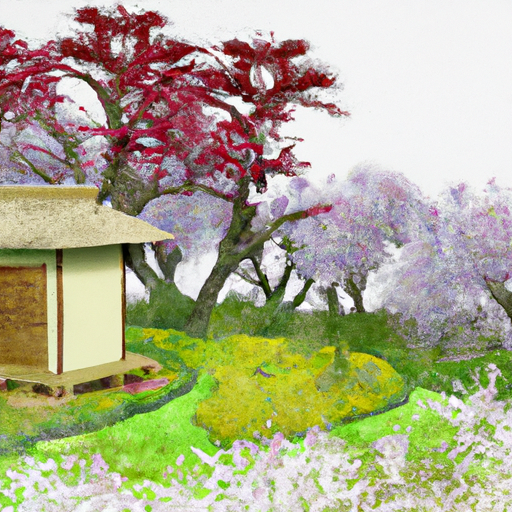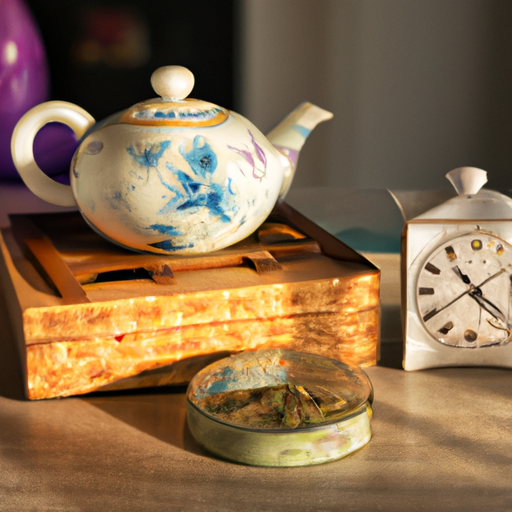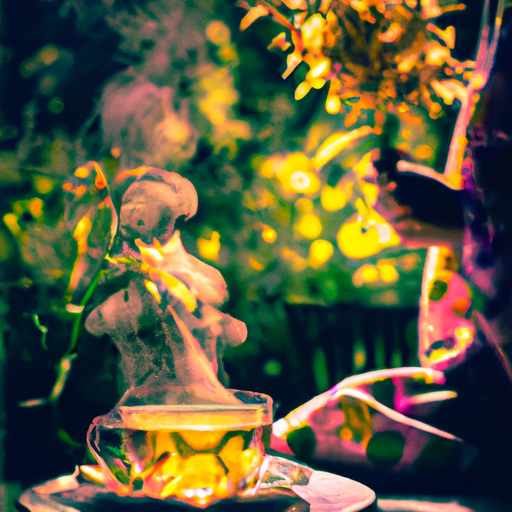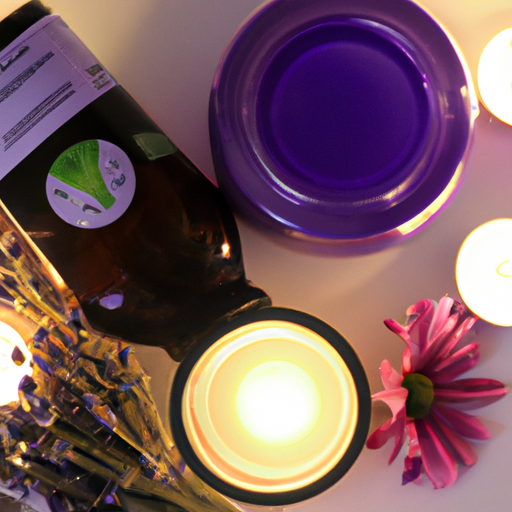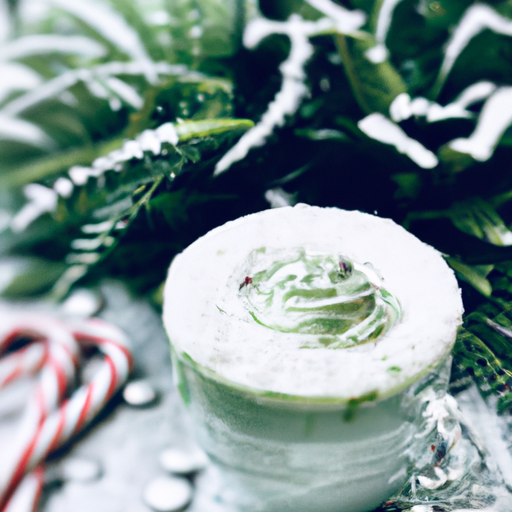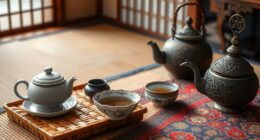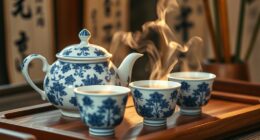As I took my first sip of Japanese green tea, I was transported to a world of rich flavors and centuries-old traditions. Japan, renowned for its tea culture, offers a captivating array of teas that are as diverse as they are delicious.
From the earthy and grassy notes of sencha to the vibrant and velvety matcha, each tea tells a story of craftsmanship and dedication.
In this article, we will embark on a journey to explore the rich variety of Japanese tea, delving into its types, production methods, and unique characteristics. Get ready to immerse yourself in the world of umami, astringency, and sweetness as we unravel the secrets of this ancient beverage.
Whether you are a tea connoisseur or simply curious about the wonders of Japanese tea, prepare to be captivated by its flavors, history, and the artistry behind every cup.
Key Takeaways
- Green tea is the most popular type of tea in Japan, accounting for at least 90% of the total tea production.
- Japanese tea cultivars, such as Yabukita, are well-known and popular in Japan.
- Japanese teas can vary in flavor, with options ranging from grassy and vegetal (sencha) to nutty (hojicha, genmaicha) to intense and sweet (gyokuro, matcha).
- Shaded teas like kabusecha, gyokuro, tencha, and matcha have unique flavors and characteristics.
Types of Japanese Teas
I’ve learned that there are various types of Japanese teas, including green tea, black tea, oolong tea, white tea, fermented dark tea, herbal teas, and more. Japanese tea has a rich history and cultural significance, particularly in the traditional tea ceremonies. These ceremonies date back to the 9th century and have become an important part of Japanese culture.
In addition to its cultural significance, Japanese tea also offers numerous health benefits. Green tea, for example, is known for its high antioxidant content, which helps to boost the immune system and reduce the risk of chronic diseases. It also contains catechins, which have been shown to have anti-inflammatory and anti-cancer properties.
Overall, exploring the wide variety of Japanese teas not only allows for a taste of different flavors and aromas, but also provides a glimpse into the rich history and cultural traditions of Japan. Plus, the health benefits make it a great choice for those looking to incorporate a healthy beverage into their daily routine.
Tea Production in Japan
Tea production in Japan is a significant industry, with the country being one of the top ten tea producers in the world. Japanese tea production is known for its high quality and diverse range of teas.
Tea cultivation in Japan is carefully managed, with tea fields often located in hilly regions with well-drained soil. The process begins with the selection of tea cultivars, such as Yabukita, which is the most popular cultivar in Japan. The tea plants are then meticulously cared for, with regular pruning and fertilization.
Harvesting typically takes place in the spring, with the first flush of leaves being the most prized. After harvesting, the leaves are promptly steamed to halt oxidation and preserve their vibrant green color. This steaming method is unique to Japan and gives Japanese tea its distinct flavor profile.
Overall, Japanese tea production is a testament to the country’s commitment to excellence and tradition.
Popular Green Tea Varieties
To truly understand the popularity of different green tea varieties, one must delve into their unique flavors and characteristics.
Green tea is not only a beloved beverage in Japan, but it also offers numerous health benefits. Known for its high levels of antioxidants, green tea is believed to promote heart health, boost metabolism, and improve brain function.
In addition to its health benefits, green tea plays a significant role in traditional tea ceremonies in Japan. These elegant and precise rituals highlight the importance of mindfulness and appreciation for nature. The preparation and serving of green tea during these ceremonies are steeped in tradition, providing a glimpse into Japanese culture and heritage.
Whether enjoyed for its health benefits or as part of a tea ceremony, green tea continues to captivate tea enthusiasts around the world with its diverse flavors and cultural significance.
Unique and Special Teas
Steeped in tradition and cherished for their distinct flavors, Japanese teas offer a captivating array of unique and special options. From the delicate sweetness of gyokuro to the roasted nuttiness of hojicha, each tea variety has its own character and health benefits. Japanese tea is not only a delightful beverage, but it also provides numerous health benefits. Rich in antioxidants, Japanese teas can boost the immune system, aid in digestion, and promote overall well-being. Additionally, tea plays a significant role in Japanese culture, with traditional tea ceremonies being a revered practice. These ceremonies emphasize mindfulness, harmony, and respect, and they provide a space for individuals to connect with themselves and others. Whether enjoyed for its health benefits or as part of a cherished tradition, Japanese tea is a treasure to be savored.
| Health Benefits of Japanese Tea | Traditional Tea Ceremonies in Japan |
|---|---|
| Boosts immune system | Emphasize mindfulness |
| Aids in digestion | Cultivate harmony |
| Promotes overall well-being | Foster respect for others |
Frequently Asked Questions
How do I properly brew Japanese tea to bring out its unique flavors?
To properly brew Japanese tea and bring out its unique flavors, follow these techniques: Use the recommended steeping time, usually between 1-3 minutes. Pay attention to water temperature, as different teas require different temperatures. Enjoy the rich flavors that unfold with each sip.
Are there any health benefits associated with drinking Japanese tea?
Yes, there are many health benefits associated with drinking Japanese tea. Different types of Japanese tea, such as green tea, matcha, and hojicha, are rich in antioxidants, promote relaxation, boost metabolism, and support overall well-being.
Can Japanese tea be enjoyed with food pairings?
Japanese tea can be enjoyed with a variety of food pairings. The flavor profiles of different teas complement different dishes, from light and delicate green teas to rich and robust black teas.
What are some traditional tea ceremonies or rituals involving Japanese tea?
Japanese tea ceremonies have a long and rich history in Japan. They are traditional rituals where matcha, a powdered green tea, is prepared and served in a precise manner. These ceremonies embody grace, harmony, and respect.
Are there any specific guidelines or etiquettes to follow when consuming Japanese tea in Japan?
There are specific guidelines and etiquettes to follow when consuming Japanese tea in Japan. It is important to bow before receiving and drinking tea, hold the cup with both hands, and avoid slurping or making loud noises while drinking.
Conclusion
In conclusion, exploring the rich variety of Japanese tea is like embarking on a sensory journey through lush green fields and serene tea gardens. Each sip unveils a world of flavors, from the grassy and vegetal notes of sencha to the delicate sweetness of gyokuro. The umami, astringency, and sweetness in every cup paint a vivid picture of Japan’s tea culture.
With its diverse range of teas, Japan offers a tapestry of tastes and aromas that captivate the senses, making it a truly remarkable experience.

